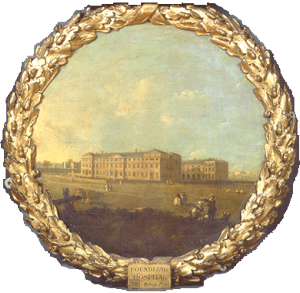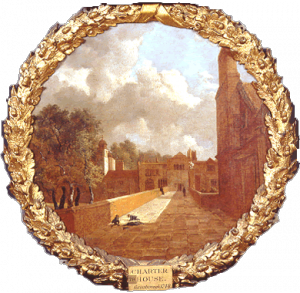Academies

- The Foundling Hospital by Wilson (1746-50)
- [click on the picture to enlarge it]

- The Charterhouse by Gainsborough (1748)
- [click on the picture to enlarge it]
These paintings hang in the Court Room of the Foundling Hospital, together with views of other hospitals.
Gainsborough later painted other London scenes.
The first academy of painting was founded in Great Queen Street on St Luke’s day 1711 (according to the customs of continental academies who had St Luke as a patron saint); Kneller was its governor, and it numbered among its directors Richardson, Pellegrini, Thornhill ; among its members Wootton, Dahl, Chéron, Highmore.
A few years later Thornhill created his own academy, at his home in Covent Garden.
Then in 1720 came St Martin’s Lane Academy, with Hogarth among its members. After a period of eclipse, it was taken up by Hogarth in 1735. Being opposed to academic painting, it celebrated the Fifth of November, the historic commemoration of English liberties (the failure of the Gunpowder Plot in 1605 and the landing of William III in 1688).
Painters exhibited at the Foundling Hospital, a charitable institution for children founded by Captain Thomas Coram, a friend of Hogarth ; the visitors who acted as benefactors also came to look at the paintings exhibited there or to attend concerts (Handel’s music for instance). Painters offered views of hospitals, among others the Foundling Hospital itself by Wilson and the Charterhouse by Gainsborough.
Auctions were also an opportunity for exhibitions of paintings.
In 1768, the Royal Academy was founded, its first President being Sir Joshua Reynolds. It was based in Pall Mall, then in Somerset House, built for that purpose from 1776 to 1786 by the architect Sir William Chambers, its treasurer.
Towards the end of the century, artists were entertained and supported by the patron of the arts Dr Thomas Munro, who lived at the Adelphi.

